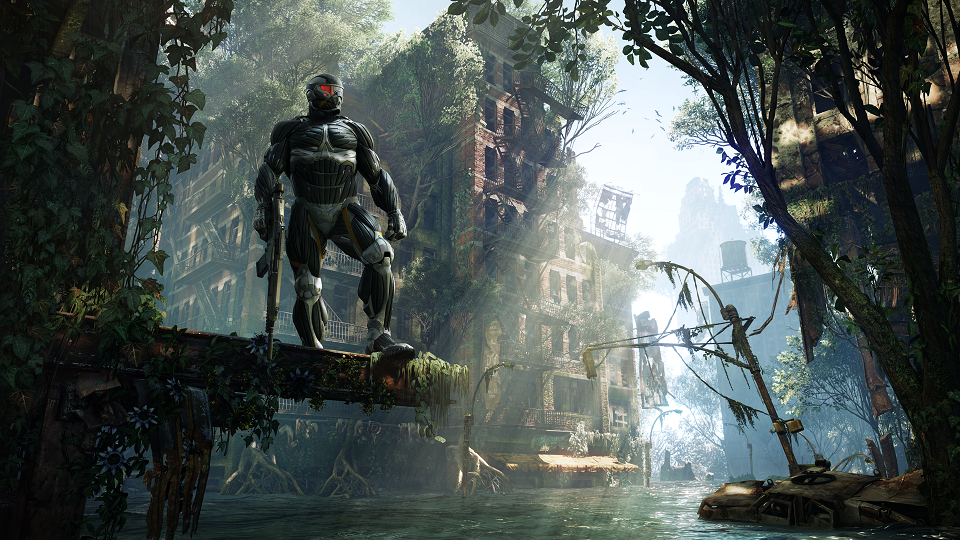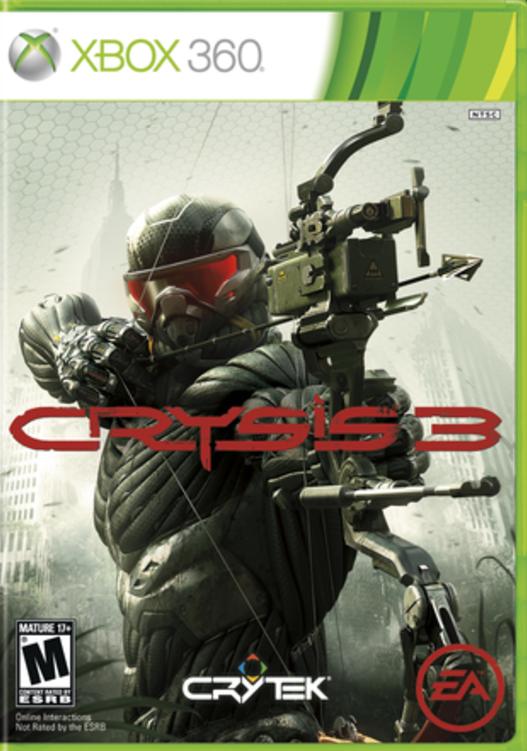 BUY IT FROM AMAZON: RIGHT HERE!
BUY IT FROM AMAZON: RIGHT HERE!
PLATFORM: XBox 360 (reviewed), PS3, PC
PRICE: $59.99
ESRB RATING: M
DEVELOPER: Crytek
PUBLISHER: EA
Crysis‘ rep has always been built not on a foundation of solid gameplay and sci-fi storytelling, but more on being the video game equivalent of painting one’s face with the blood of lions, swallowing a ball of hashish, and being judged by the dead kings of old at the Fire Shrine. The computer that runs it is worthy, and none shall call its name with less than respect and honor. Crysis has always been the orgy every graphics whore hopes they’re hot enough to get invited to, and these are not people who are about to let little shit like the original Crysis being boring as freewheeling fuck get in their way. Lucky for them that Crysis 2 is a massive, unrelenting beast of a game, taking advantage of the vast urban landscape of New York, gleefully, terrifyingly, and thoroughly ruining the city’s shit in ways that would make Michael Bay piss himself, underscored by Hans Zimmer’s most subtly creepy work on the main theme.
Given the visual aesthetic is a perfect combination of the first two games, it makes perfect sense that Crysis 3 lands smack dab in the middle in every respect. Visually, it’s still an absolute miracle of modern programming, but in all the ways part 2 went for broke, Crysis 3 represents an enfeebled step backward.
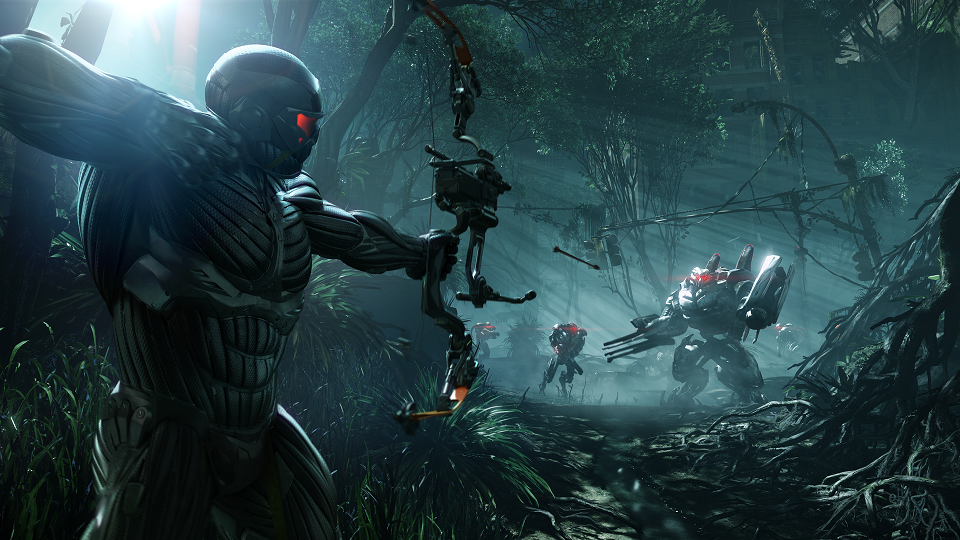 Crysis 3 takes place 20 years after Alcatraz gets Darryl Revok’d out of his own body by Prophet. In those years, Prophet has gone on a world tour, flushing out the remainder of the Ceph. Eventually, the Ceph are down to a few stragglers, leaving it up to the Hargreave-Rasch corporation to help support the people left homeless or dying, and through charitable contributions, help rebuild the ruins and reforge the crippled cities back to their formerNAH IM JUST KIDDING they go evil and enslave everybody.
Crysis 3 takes place 20 years after Alcatraz gets Darryl Revok’d out of his own body by Prophet. In those years, Prophet has gone on a world tour, flushing out the remainder of the Ceph. Eventually, the Ceph are down to a few stragglers, leaving it up to the Hargreave-Rasch corporation to help support the people left homeless or dying, and through charitable contributions, help rebuild the ruins and reforge the crippled cities back to their formerNAH IM JUST KIDDING they go evil and enslave everybody.
On top of that, seeing the Nanosuit boys as their property, they decide to strip all nanosuit soldiers of their suits in the least humane way imaginable, leaving only Prophet, who, in his travels, has found that Alcatraz’s melding with the Ceph has left him a direct line to the alien race, and it hasn’t exactly done wonders for the man’s sanity. In fact, as the game starts, there’s a few moments that wouldn’t be out of character for Dr. Manhattan, and that material along with Crysis 1‘s Psycho going on a mad scramble for revenge for the agonizing nanosuitectomy that left him powerless and broken is the strongest in the game, the primary reason the game starts so compelling.
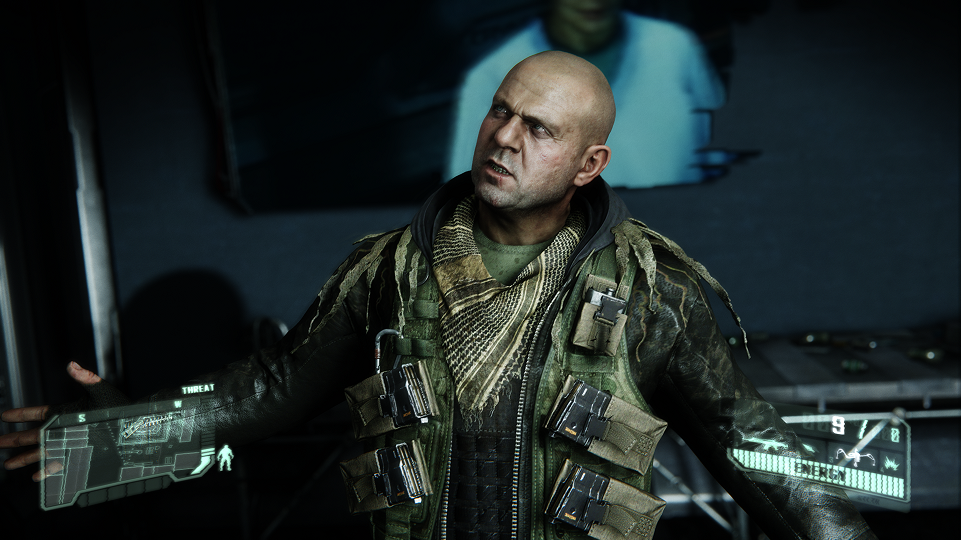 My long standing hatred of your average FPS notwithstanding, between this and Halo 4, I’m starting to notice a trend of big-time marine FPS developers crafting stories asking if these monsters they’ve created even count as human anymore, and I like it, I must say. Halo 4 runs further with it than Crysis, though, which pushes Prophet’s shaky grasp of reality a bit off to the wayside in favor of doing cool, far-reaching stuff with his new alien connection. These moments work well enough–the first time Prophet snags an alien weapon is equal parts badass and disconcerting–but still disappointing given where the whole shebang starts. Glimpses of the stronger tale that could’ve been peek out every once in a while, especially when Psycho’s quest to find the one who skinned him comes to an end, but only for moments.
My long standing hatred of your average FPS notwithstanding, between this and Halo 4, I’m starting to notice a trend of big-time marine FPS developers crafting stories asking if these monsters they’ve created even count as human anymore, and I like it, I must say. Halo 4 runs further with it than Crysis, though, which pushes Prophet’s shaky grasp of reality a bit off to the wayside in favor of doing cool, far-reaching stuff with his new alien connection. These moments work well enough–the first time Prophet snags an alien weapon is equal parts badass and disconcerting–but still disappointing given where the whole shebang starts. Glimpses of the stronger tale that could’ve been peek out every once in a while, especially when Psycho’s quest to find the one who skinned him comes to an end, but only for moments.
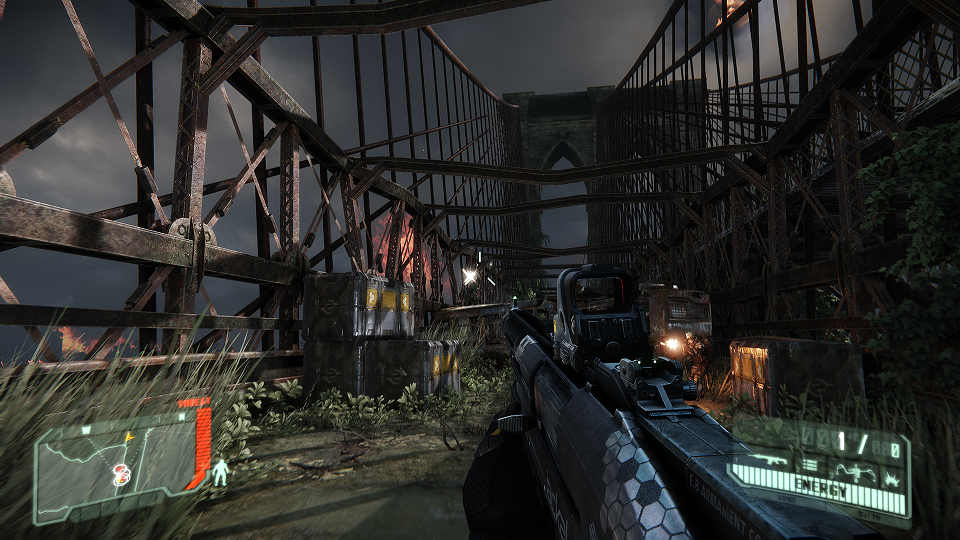 That’s slightly unfair, though. Crysis is not Spec Ops. This series’ bread and butter is in the scale of what’s at stake. The problem is that the crushing yoke of the invasion never hits home in the same way Crysis 2 does. New York in Crysis 3 is already a hair away from unrecognizable, and it’s an impressive achievement seeing how they’ve managed to one-up Enslaved in terms of showing nature reclaiming the greatest metropolis on Earth. But with the damage done, the game doesn’t quite present as strong a feeling of everyone and everyone being completely and utterly fucked as its predecessor. As such, the linearity of the game shows under the pretty veneer. Every encounter with the Ceph once felt like a risk, making Alcatraz’s stealth antics all the more satisfying. Here, you’re able to cloak your way through 80% of the enemy encounters in the game without firing a shot, and the ones you can’t are business as usual for an FPS. On top of that, the game introduces a hacking mechanic allowing you to take control of CELL turrets and smart mines. The mechanic is never not fun, but it does steal a lot of the game’s thunder when mines are never a danger to Prophet. It’s a walk in the park, whereas even Crysis 2‘s minor skirmishes could all hand you your ass if you uncloaked in the wrong place at the wrong time.
That’s slightly unfair, though. Crysis is not Spec Ops. This series’ bread and butter is in the scale of what’s at stake. The problem is that the crushing yoke of the invasion never hits home in the same way Crysis 2 does. New York in Crysis 3 is already a hair away from unrecognizable, and it’s an impressive achievement seeing how they’ve managed to one-up Enslaved in terms of showing nature reclaiming the greatest metropolis on Earth. But with the damage done, the game doesn’t quite present as strong a feeling of everyone and everyone being completely and utterly fucked as its predecessor. As such, the linearity of the game shows under the pretty veneer. Every encounter with the Ceph once felt like a risk, making Alcatraz’s stealth antics all the more satisfying. Here, you’re able to cloak your way through 80% of the enemy encounters in the game without firing a shot, and the ones you can’t are business as usual for an FPS. On top of that, the game introduces a hacking mechanic allowing you to take control of CELL turrets and smart mines. The mechanic is never not fun, but it does steal a lot of the game’s thunder when mines are never a danger to Prophet. It’s a walk in the park, whereas even Crysis 2‘s minor skirmishes could all hand you your ass if you uncloaked in the wrong place at the wrong time.
 It’s not a bad game taken piecemeal from its forebears. It’s functionally on par with the latest Call of Duty, with an infinite number of ways to play, even if you’ll only use one or two. Even with all the skillsets I unlocked, I stuck with stealth/health/melee upgrades, and never had to switch after the two hours it took to obtain them. Freedom of choice and forethought is here, in every aspect, but rendered unnecessary. Prophet’s tale doesn’t take the risks hinted by how it sounds on paper, but I’d be lying if I said the game didn’t throw enough weight behind it to make me want to see how it turned out. Crysis 3’s problems mostly come down to having small sci-fi play out in epic sci-fi’s playground. Playing as Prophet to the bitter end has its joys, and many of them, but for a game that treasures playing Predator, it doesn’t have Crysis 2′s innate ability to move in for the kill.
It’s not a bad game taken piecemeal from its forebears. It’s functionally on par with the latest Call of Duty, with an infinite number of ways to play, even if you’ll only use one or two. Even with all the skillsets I unlocked, I stuck with stealth/health/melee upgrades, and never had to switch after the two hours it took to obtain them. Freedom of choice and forethought is here, in every aspect, but rendered unnecessary. Prophet’s tale doesn’t take the risks hinted by how it sounds on paper, but I’d be lying if I said the game didn’t throw enough weight behind it to make me want to see how it turned out. Crysis 3’s problems mostly come down to having small sci-fi play out in epic sci-fi’s playground. Playing as Prophet to the bitter end has its joys, and many of them, but for a game that treasures playing Predator, it doesn’t have Crysis 2′s innate ability to move in for the kill.
